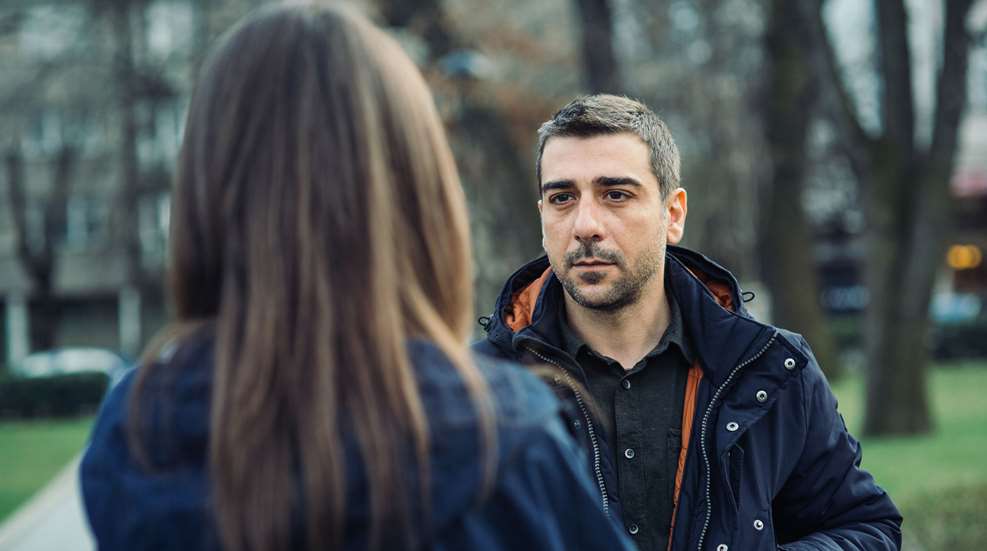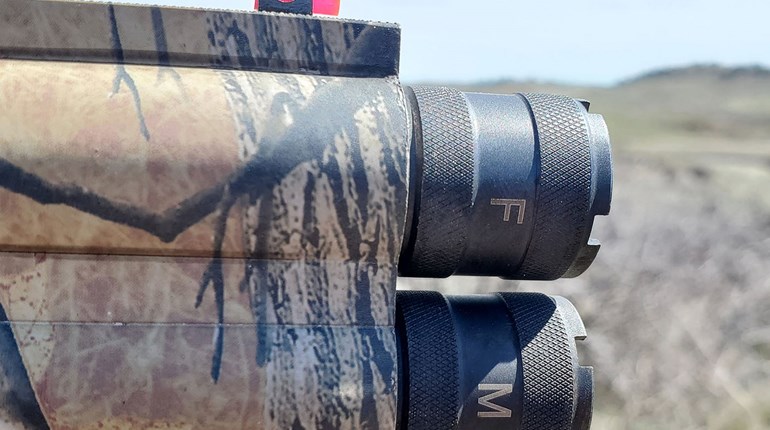
Victims of violent crime often say after the incident, “It came out of nowhere.” But that’s not always true. The criminal came from somewhere, and in many cases, there were pre-incident indicators that he was a bad guy or that something abnormal was going on. The victim didn’t see the signs, but that doesn’t mean there weren’t any.
Understanding gaze behavior—yours and the bad guy’s—is key to picking up on those abnormal signals and spotting crime before it fully develops. Gaze behavior is what someone does with their eyes and how their body reacts to what they’re seeing. You first need to be mindful of your own gaze behavior; how you look at the world around you. That will enable you to spot when someone else’s gaze is cast on you in a suspicious way.
Your Own Gaze
You already know that walking around in condition white, nose in your phone, oblivious to what’s going on around you, is foolish and dangerous. Being casually but consciously aware of your surroundings will keep you safer, but this isn’t just “keep your head on a swivel” stuff. You need to look beyond your immediate vicinity and know what’s going on at various distances: close, mid-range and at distance.
Think about when you’re driving. You don’t focus all your attention on the steering wheel (very close) or on the back of the car in front of you (close) or even on the car in front of him (mid-range). You shift your gaze from the car in front of you to the side of the road, to the rearview mirror, to way up ahead, and back to the car in front of you, and every so often you repeat this sequence in some way. Why? You do this so you can spot a potential problem—say, a deer on the side of the road, or brake lights 20 cars up on the interstate—while you still have plenty of time to react to it.
The same needs to be true when you’re walking down the street, through a parking lot or anywhere else. Pay attention to what’s going on immediately around you, at a mid-range distance and far ahead where you’re going. Who is moving in and out of each space? What problems are developing that you can stay away from? Be careful about just whipping your head from side to side as you do when you cross the street—we’ve all had the experience of looking so quickly that we really don’t look at all, and we miss something that was right there. Consciously look around you at each distance to get a good handle on your surroundings. Let your brain register what’s happening.
It’s also helpful to make a habit of checking behind you, and you can use mirrors and reflective surfaces to help you do that, if available. Don’t be afraid to physically turn your head and look behind you if you’ve just passed someone you feel suspicious of or if you have that eerie “someone’s following me” feeling.
Someone Else’s Gaze
Somewhere around 90 percent of our communication is non-verbal. You can tell a lot about a person and their intentions by their body language and, for the purposes of this article, by the way they watch the world around them.
Pay attention to who is looking at you. Depending somewhat on where you live, eye contact with strangers has well-known social limits. Looking for more than a couple of seconds is staring. A short stare with a smile, followed by looking away and then making eye contact again, might be flirting. Eye contact followed by dropping the eyes can indicate fear or submission. And long stares are threatening, intimidating or at least uncomfortable. Plenty of people are socially awkward without being a threat, but take note of anyone who looks at you too long, too fast, too frequently or too intensely. None of that is normal behavior among strangers.
A quick “accidental” eye contact is awkward, so we often finish it with a smile or a nod to indicate that we’re not a weirdo and we mean no harm. Pay attention to anyone who meets your eye for a split second and immediately shifts their gaze away, especially if they do it more than once. At that point, they’re watching you for some reason that might be innocent … or might not.
Make note of anyone who stares at you. If he’s not innocently flirting, and if you’re not doing anything attention-grabbing, why’s he so intent on watching what you’re doing? Is he sizing you up? Is he learning your patterns? Is he intentionally meeting your gaze to see if you react fearfully or confidently?
Also beware of groups of people who are together but aren’t engaging each other or looking at each other. A group of young men standing around in a parking lot should be talking to each other or at least looking at their phones, probably near someone’s car or the bus stop. They shouldn’t be standing in silence, watching other people or staring at the store exit to see who passes through. That’s abnormal gaze behavior, and you should steer clear of this pack.
Safety expert Marc MacYoung refers to a particular type of gaze behavior he calls a “witness check,” which he describes in his book Safety Doesn’t Have to Be Scary as “a fast glancing around to see if there are any witnesses or people near enough to interfere with the attackers’ plans. This usually happens as they are approaching, but still sort of far out. It’s a very distinctive move that if you see someone doing it in a fringe area (or a confrontation), it’s a bad, bad sign.” He describes the witness check as a very fast, unfocused glance—the criminal isn’t trying to recognize anyone’s face, as you would do if you were looking for a friend in a crowd, so his gaze doesn’t linger on each side. He’s simply checking for the presence of any people at all.
The specific gaze behavior known as a witness check often happens while the criminal is still a distance away from his chosen prey, and he’ll probably be in the act of approaching you while he does it. This is why it’s important for you to look beyond what’s immediately in front of you and scan your surroundings at mid-range and at distance—if you can spot someone watching you and glancing around as he approaches you, you have bought yourself time to react.
If you think about it, you already know something about what predatory gaze behavior looks like. Picture a housecat stalking a bird in the front yard. What is his body doing? It’s low, tense, every muscle flexed, moving quickly when he can and then freezing until the bird turns away, then creeping slowly, tail twitching. And what are his eyes doing? They haven’t moved for the entire stalk. He’s deliberate and focused, staring at his chosen victim.
Any person approaching you with that kind of focused gaze behavior should throw up all kinds of red flags. If he’s far off, he might avert his gaze to avoid eye contact that might scare you off. If he’s at mid-range, he might test you with a hard stare, hoping to intimidate you into freezing for a couple of seconds while he closes the gap. If he’s close, within a few yards, he might watch you out of the side of his eyes while pretending to look at something else, or he might just plow ahead with a smash-and-grab-style attack. You want to spot him before he gets that close.
Part of keeping yourself safe is paying attention to who’s paying attention to you and how they’re using their gaze, especially when it’s cast in your direction. And the best way to notice the signs of criminal gaze behavior is to develop your own conscious gaze behavior that has you looking and really seeing what’s going on around you at close, mid-range and far-out distances. This is really just people-watching taken to a slightly more deliberate level, but it’s one of the best tools you have to see trouble while it’s still brewing so you can avoid it.














































